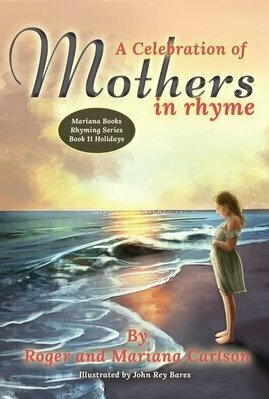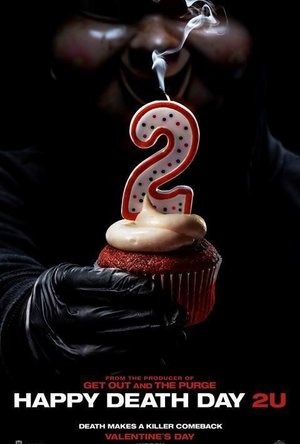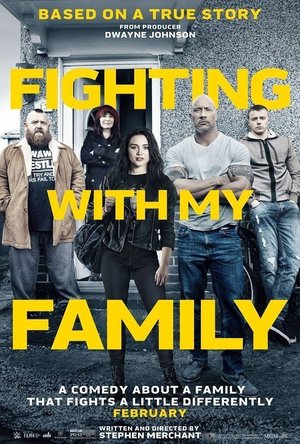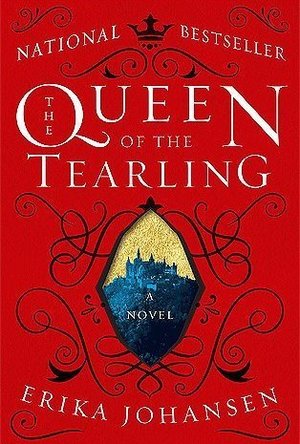
Free Relaxing Nature Sounds and SPA Music
Health & Fitness and Lifestyle
App
As part of our worldwide promotional efforts, we offer all music and sounds from In-App Purchase...

Abs Diet Smoothie Selector
Health & Fitness and Lifestyle
App
**100 HEALTHY AND DELICIOUS SMOOTHIE RECIPES FROM THE EDITORS OF MEN’S HEALTH AND WOMEN’S HEALTH...

HippoRemote Pro ~ Wireless Keyboard, Mouse, Remote Control & Gamepad
Productivity and Utilities
App
WHAT IS HIPPOREMOTE? Control your computer with a wave of your hand or a flick of your finger!...

Blackbox Pro for Dreambox, Vu+, Xtrend, TVHeadend and Others
Entertainment and Utilities
App
* SPECIAL DISCOUNT FOR A LIMITED TIME ONLY * Buy Blackbox today and you get the Blackbox 3 upgrade...

Sleep Songs for Kids - Calming Baby Lullaby Collection with Relaxing Sounds & White Noise
Entertainment
App
If your child will not sleep and it's time for bed, it's not a problem anymore! Here's a brand new...

National Rail Enquiries: Train journey planner
Navigation and Travel
App
Stay on track with the free National Rail Enquiries App, Great Britain’s number one destination...

A Celebration of Mothers in Rhyme (Mariana Books Rhyming #11)
Book
Mothers hold a special place in the world. When you think of many of your fondest memories, your...
Children Seasons Rhyming
Lee (2222 KP) rated Happy Death Day 2U (2019) in Movies
Feb 18, 2019 (Updated Feb 21, 2019)
In Happy Death Day 2U, we begin by following Ryan. Ryan was also in the first movie, bursting into his campus room each morning, interrupting roommate Carter and Tree after she'd spent the night there. As he makes his way to the room from the car he'd spent the night in - avoiding a barking dog, dodging a man asking for money and a boy riding a skateboard - it's pretty clear that we're setting up a series of events likely to be repeated time and again in a similar way that Tree experienced a very specific series of events each day in the first movie. During his morning at university, we discover that Ryan has been working on a Quantum mechanics experiment along with a bunch of nerdy students - a machine dubbed 'Sissy'. Turns out Sissy has been causing some very high power fluctuations and generated some very high readings the day before, the day in which Tree experienced her loop. Soon after, Ryan is killed by the baby face killer and wakes up in his car once again, experiencing the same events we've just seen encounter on the way to his room. When he explains what just happened to Tree and Carter, Tree sets about trying to help him figure out how Sissy caused the time-loop in the first place, and how it has now transferred to Ryan.
At this point you'd think you've got the rest of the movie pretty much figured out - with Ryan repeating his day, aided by experienced looper Tree. But surprisingly, the movie largely abandons its slasher story-line. Instead, we get a more sc-fi story with a varied mix of slapstick comedy and emotional drama. An accident involving Sissy opens up a portal to the multiverse and Tree finds herself caught up in her original loop once more. Only this time, it's in a slightly different universe to the one she's used to - her mum is now alive, and her boyfriend is dating her best friend. Not only does she need to work with Ryan and his nerd friends each day in order to determine how to put things right, she needs to once again work out who the killer is in this particular universe and, more importantly, make the difficult decision to either stay in the universe where her mum is still alive, or return to the one she knows and has lived in all her life.
Once again, Jessica Rothe as Tree is what makes this movie so enjoyable. From the emotional scenes with her mum, to the frustration of the loop, to the bad ass fighting back against it all, she pulls it all off wonderfully. We even get time to enjoy some very funny death scenes too - a particularly enjoyable one being a sky-dive out of an aeroplane, wearing only a bikini and then landing horizontally in slow motion while giving the finger to the camera!
It's difficult for me to say whether or not I enjoyed this movie more or less than the first. A lot of what made the original so enjoyable is present in this sequel. But there are also a lot of new elements introduced, some that work and some that don't. Overall I had a great time watching with this though - definitely a worthy sequel.
Lee (2222 KP) rated Fighting with My Family (2019) in Movies
Mar 1, 2019
Fighting With My Family begins with a young Paige, real name Saraya-Jade, enjoying the WWF wrestling on TV with brother Zak and trying out some of the moves and holds on each other, similar to how I managed to perfect the figure four leglock on my younger brother.... But, that's where the similarities end as Saraya-Jade and Zak are positively encouraged by their parents to beat the crap out of each other, whereas I would probably have been grounded for making my brother cry or something. Their parents, Patrick ‘Rowdy Ricky Knight’ and Julia ‘Sweet Saraya’ are former wrestlers themselves who now run World Association of Wrestling (WAW), where grown up Saraya-Jade (Florence Pugh) and Zak (Jack Lowden) now fight each other for money in regular evening shows. Each day they head out in their WAW van to pick up a bunch of local kids, who would otherwise be headed down a path of criminality, and head to the gym to train them in the ring. Elder brother Roy was also a wrestler, but is currently in prison. It's a simple, close-knit working class family - all looking out for each other, highly passionate about wrestling and each having (or had at one point) a dream to one day make it big in the WWE.
One day that dream has a chance of becoming reality when tryouts for the WWE come to The O2 in London and Zak and Raya are selected to come along. WWE Coach Hutch (Vince Vaughn) puts them through their paces but only Raya is selected to move onto the next stage in Florida. While she heads out to continue her dream, a rejected Zak resigns himself to the fact that he's only ever going to be a small time wrestler. Raya becomes Paige and sets about trying to prove herself as the ordinary Brit girl in among all the dancers, models and cheerleaders who are also with her at boot camp. She's resentful of the others, as they were 'only selected for their tits and ass' and are without any kind of wrestling background. She's lonely, angry and lacking the self confidence she needs to really make it happen. Meanwhile, Zak is struggling with missing out on heading to Florida - disinterested in his new born baby, undertaking grueling matches in front of small crowds, and picking fights in bars just for the hell of it.
Fighting With My Family boasts some real laugh out loud moments, but there is also a lot of relatable family drama and emotion. The cast are all incredible, particularly Florence Pugh as Raya/Paige. Vince Vaughn is a lot of fun as the coach and The Rock also brings a lot of comedy to the few scenes he's in. I absolutely loved everything about this movie and couldn't really fault it at all. Despite knowing beforehand the outcome for Paige, the whole movie just has you wondering throughout if she's going to make it or if she's going to quit, which makes the ending all the more enjoyable. And when you see clips during the credits of her real life family, you appreciate just how spot on some of the casting and acting is too!
Inky Books (3 KP) rated The Queen of the Tearling in Books
Jun 21, 2018
I’m so glad I found this book because I could borrow it right away from the library. I had seen it, decided a few times not to buy the book because of the books I still haven’t read, so I just jumped at the chance.
So, let us start at the beginning. It was slow to start. I wasn’t connected to any of the characters, I didn’t have much of an interest other than just entertainment. There were a lot of people introduced at once and I had a hard time keeping them straight at first. Over time the characters got sorted out and each had their own personality.
This book was told from a few different perspectives, but for the most part it added important details to the story. It was interesting to see the thoughts of some people other than Kelsea, and it rounded out the story better than if it would have been just her perspective.
However, with the change in perspectives I found that I had a few issues with one character in particular. Javel is a complicated character, and not in the way most people like. His inner monologue has him come off as a strong character, one that doesn’t take crap. His actions and words tell a completely different story. Javel is a weak man. I was very unimpressed with his character and his story until the very, very end. He only had that one redeeming quality, but it paled against everything else about him.
Kelsea is a character I can defiantly stand behind, though there are two things that irked me. This is more about the writing of the book than it is about Kelsea herself, but that fact that she’s plain, not beautiful, was mentioned so often that I got very annoyed. She’s not as beautiful as her mother was, so what? She looked plain standing next to this woman. Yeah, so what’s your point? I get that she is plain but it doesn’t need to be mentioned multiple times in the first chapter and at least once in all the other chapters. The second was that she sees beauty as vanity. Just because a women is beautiful doesn’t mean she’s automatically a rival or that she’s worthless. It annoyed me that every woman was more beautiful than Kelsea could have imagined. Yeah, well get used to it. You’re the queen now, you’re going to be surrounded by beautiful people.
The one other issue I had was with the timing of everything. I can’t get a sense of how long it was from the begging of the book to the end, and it jumps forward weeks ahead with little explanation.
Despite those problems that I have with the book I really enjoyed it. Very rarely do I get to read about queens taking their keep by storm and upturning everything in her wake. Usually Princesses or other random girls are the main character, and this made me happy. It gave me an insight to what her life was like as queen without boring me.
The plot twist was rather predictable, I had it figured out from halfway through the book, but the way it was handled in the end was interesting.
This author isn’t afraid of killing her characters or going into details most would just briefly skim over. It was refreshing. I can’t wait to listen to or read the next book to see what happens from here!



Dean (6927 KP) Feb 21, 2019
Lee (2222 KP) Feb 21, 2019